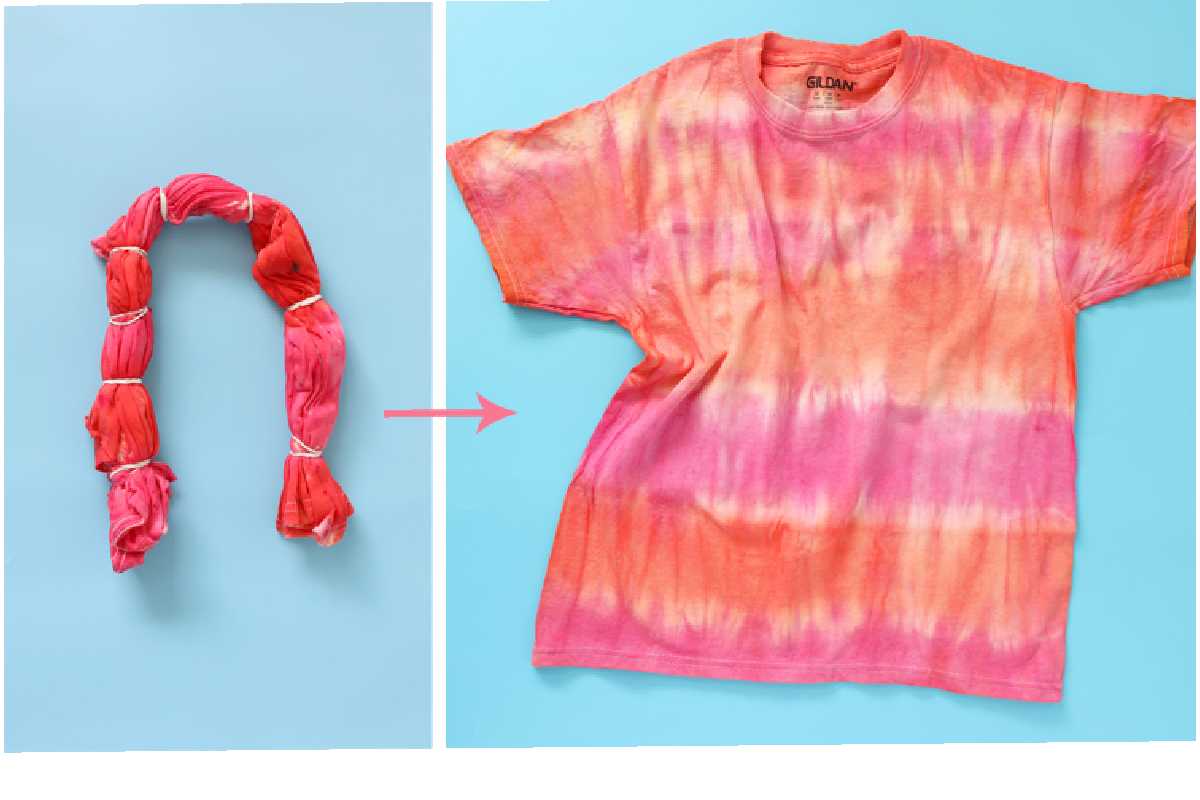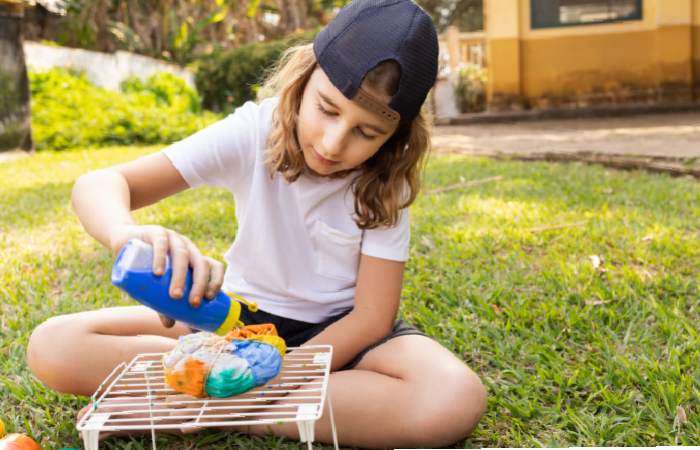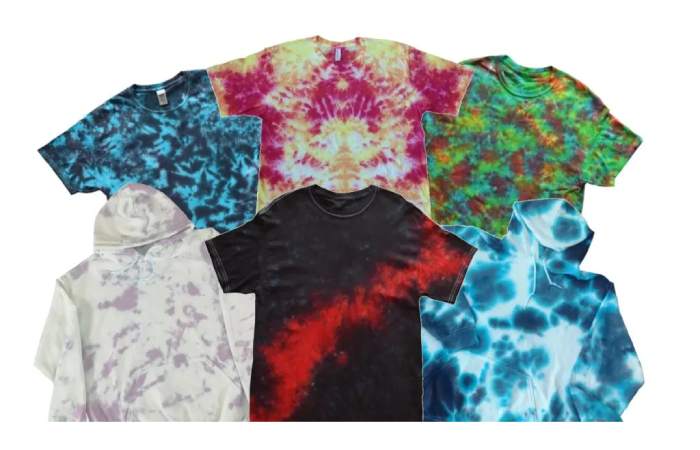
Tie-Dye Folding Techniques is a fun and playful way of turning ordinary fabric into an artistic masterpiece. Tie-dyeing is not about the choice of color but the kind of folds done on a fabric. In this article, we will show the reader different folding tie-dye methods, and apart from the written explanation, every picture shows the name of the described image.
The Importance of Folding in Tie-Dye
But, looking at facets of folding in tie-dye, we move to see how it is essential in achieving different textures. You arrange and manipulate the fabric by folding, twisting, or crumpling it; depending on where you direct the dye, it will stick or won’t. Depending on how one folds it, it can become a spiral stripe, and even more elaborate patterns can be obtained by following this technique.
Popular Tie-Dye Folding Techniques

The Spiral Technique
The most recognizable and straightforward design has to be the spiral. Here’s how to achieve it:
[Image description: A simple white round-neck T-shirt with the fabric spread on a table and two hands gripping the middle of the T-shirt and twisting them in a spiral manner.
- Place your fabric on a flat surface.
- Take the center of the material and then roll it clockwise similarly.
- As you twist it, it will flexibly fold into a spiral shape.
- Tie the spiral with rubber bands to create sections.
When dyed, this technique creates a mesmerizing circular pattern that radiates from the center.
The Accordion Fold Tie-Dye Folding Techniques
This technique creates striking stripes or grid patterns:
[Hands folding a square piece of fabric in an accordion style, making even pleats from one edge to the other.]
- Start at one edge of your fabric and fold it in a straight line, about 1-2 inches wide.
- Continue folding back and forth in this accordion style until the entire piece is folded.
- For stripes, secure with rubber bands at intervals.
- Fold the accordion in half and secure with bands in both directions for a grid.
The result is a series of straight lines that can be customized based on how you apply the dye.
The Crumple Tie-Dye Folding Techniques

For a more abstract, organic look, try the crumple technique:
[Hands randomly scrunching and crumpling a T-shirt into a tight ball.]
- Lay your fabric flat and start scrunching it up randomly.
- Continue crumpling until you have a tight ball of fabric.
- Secure the ball with rubber bands in various places.
This technique creates a beautiful marble effect with no two pieces ever looking precisely the same.
The Bullseye Technique
Create concentric circles with this simple yet effective method:
[ A T-shirt with a small section pinched in the center, lifted, and wrapped with a rubber band. More rubber bands are shown being added at intervals.]
- Pinch a small section of the fabric where you want the center of your bullseye.
- Lift this pinched section and smooth the fabric down.
- Wrap a rubber band tightly around the fabric near the pinched point.
- Continue adding rubber bands down the fabric at regular intervals.
When dyed, this creates a series of concentric circles resembling a target or bullseye.
The Mandala Fold
For a more intricate, symmetrical design, try the mandala fold: For a more intricate, symmetrical design, try the mandala fold:
[A rectangular piece of fabric is then folded horizontally as well as vertically, and further, this is folded again and again; a triangular shape is observed of the given edges of cloth folded inwards to form a small triangle.
- Beginning with a four-sided square shape of fabric, one folds the fabric in half across the diagonal.
- Now fold this triangle in half as the points meet on the fold you just used for the half of the triangle.
- Fold it repeatedly until your strip looks like a long triangle shape.
- Bring the two outer points of the paper to the middle so that the paper forms the shape of a triangle.
- According to the second one, secure with rubber bands and apply dye to the edges to create a mandala-like design.
It constitutes an exceptionally complicated method where the eleven petals develop in a flower-like pattern.
Conclusion
Learning these styles of folding tie-dye unleashes a bevy of numerous opportunities to explore the same. These two methods have different effects, thus enabling people to choose the styles they prefer for their tie-dye products. Recall and emphasize that tie-dye is all about experimentation one should not shy away from applying multiple techniques or even coming up with new folding ideas on one’s own. Given time, you can sew distinctive products, representing art in clothes and nice colors.
As you start tie-dyeing, and for those who have done it a couple of times, the folding techniques mentioned here are the perfect foundation. Therefore, get some material, some dyes to paint your colors, and rubber bands to warp your stripes.